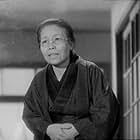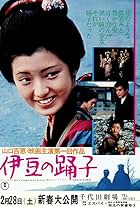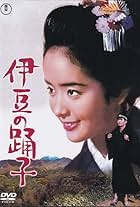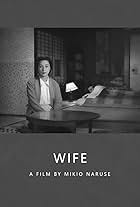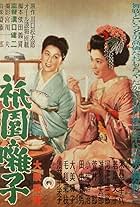IMDb RATING
6.8/10
126
YOUR RATING
In this adaptation from Kawabata, a young student becomes friends with a brother and sister in a troupe of travelling entertainers, who perform at a geisha house in mining country.In this adaptation from Kawabata, a young student becomes friends with a brother and sister in a troupe of travelling entertainers, who perform at a geisha house in mining country.In this adaptation from Kawabata, a young student becomes friends with a brother and sister in a troupe of travelling entertainers, who perform at a geisha house in mining country.
Photos
Den Ôhinata
- Mizuhara, a student
- (as Den Obinata)
Jun Arai
- Zenbei, master of 'Yukawarô'
- (as Atsushi Arai)
Ryôichi Takeuchi
- Ryûichi, the son
- (as Ryoichi Takeuchi)
Shôzaburô Abe
- Customer at the spa
- (as Shozaburo Abe)
- Director
- Writers
- All cast & crew
- Production, box office & more at IMDbPro
Storyline
Did you know
- Quotes
Mizuhara, a student: Listen, you can't exchange your sister for money.
- ConnectionsFeatured in Shôchiku eiga sanjû-nen: Omoide no album (1950)
Featured review
A college student on his way to visit a fellow student and a country festival falls in with a girl, her brother and his wife. Once they were mine owners, but they lost the mine and are reduced to wandering players. Meanwhile, an engineer visits a mine owner and demands a bonus now that the mine is profitable. The mine owner refuses. The engineer had high-tailed it out of town when things had gotten tough. Harsh words are exchanged.
Heinosuke Gosho's tale of tough times on the road and young love is a very well-told tale, with some fine acting and good camerawork. However, my academic nature cannot help but compare it to Ozu's works in the 1930s. The actor who plays the engineer, Reikichi Kawamura, was a regular in Ozu's films through 1947, and early on, the ingenue, Kinuyo Tanaka, sings a song in which she compares herself to a floating weed..... ding! ding! ding! ding! and so I started making comparisons and trying to decide who did what better.
Yet on reflection, any comparison is a false one, because even though the two directors worked in the same genre, they worked them to different ends. Story is what occurs when character meets situation and one or both must change; the path is plot; and the more believable all are (for realistic fiction, not symbolic fiction like sf or fantasy or westerns), the better; and for too much early Japanese film, it seems to me, character is twisted unrealistically to fit the convenience of the plot.
Both Gosho and Ozu were intent on realistic characters in realistic situations, but it seems to me that Ozu was far more interested in character. Perhaps that is why, after the war, he abandoned much camera movement and settled on a still camera at floor level and long takes: less flash, look at the people. Gosho, at least in this movie, is clearly interested in the plot, in how the characters are revealed and how they change.
Ozu, because he adhered less to plot as we understand it, seems less conventional than Gosho. We've seen youngsters fall in love in hundreds, if not thousands of works of fiction, and the only question is whether it's a happy or a tragic ending. To put it bluntly and unfairly, the story that Gosho wants to tell us is an oft-told tale, so he had better find some interesting way of telling us. Ozu's stories are more unconventional, and it is their unfamiliarity that fascinates us, their riddles that ensnare us. Yet Gosho, in telling his conventional tale in the same setting that Ozu used for his unconventional stories, tells this one just as well.
Heinosuke Gosho's tale of tough times on the road and young love is a very well-told tale, with some fine acting and good camerawork. However, my academic nature cannot help but compare it to Ozu's works in the 1930s. The actor who plays the engineer, Reikichi Kawamura, was a regular in Ozu's films through 1947, and early on, the ingenue, Kinuyo Tanaka, sings a song in which she compares herself to a floating weed..... ding! ding! ding! ding! and so I started making comparisons and trying to decide who did what better.
Yet on reflection, any comparison is a false one, because even though the two directors worked in the same genre, they worked them to different ends. Story is what occurs when character meets situation and one or both must change; the path is plot; and the more believable all are (for realistic fiction, not symbolic fiction like sf or fantasy or westerns), the better; and for too much early Japanese film, it seems to me, character is twisted unrealistically to fit the convenience of the plot.
Both Gosho and Ozu were intent on realistic characters in realistic situations, but it seems to me that Ozu was far more interested in character. Perhaps that is why, after the war, he abandoned much camera movement and settled on a still camera at floor level and long takes: less flash, look at the people. Gosho, at least in this movie, is clearly interested in the plot, in how the characters are revealed and how they change.
Ozu, because he adhered less to plot as we understand it, seems less conventional than Gosho. We've seen youngsters fall in love in hundreds, if not thousands of works of fiction, and the only question is whether it's a happy or a tragic ending. To put it bluntly and unfairly, the story that Gosho wants to tell us is an oft-told tale, so he had better find some interesting way of telling us. Ozu's stories are more unconventional, and it is their unfamiliarity that fascinates us, their riddles that ensnare us. Yet Gosho, in telling his conventional tale in the same setting that Ozu used for his unconventional stories, tells this one just as well.
Details
- Release date
- Country of origin
- Languages
- Also known as
- The Izu Dancer
- Production company
- See more company credits at IMDbPro
- Runtime1 hour 34 minutes
- Color
- Sound mix
- Aspect ratio
- 1.37 : 1
Contribute to this page
Suggest an edit or add missing content

Top Gap
By what name was The Dancing Girl of Izu (1933) officially released in Canada in English?
Answer



